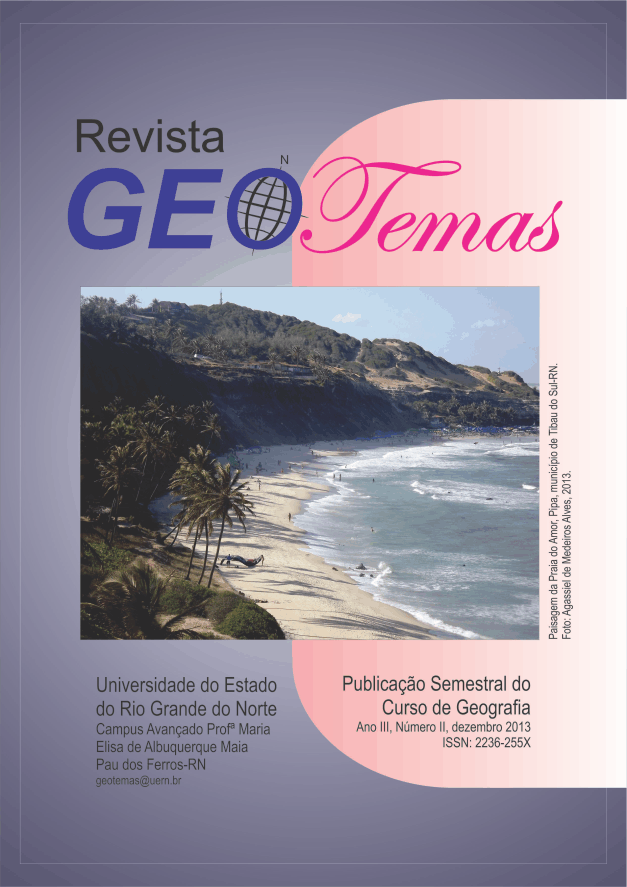O DESAFIO DAS CIDADES: ATERRO SANITÁRIO X INCINERADOR COM GERAÇÃO DE ENERGIA (WTE)
Palavras-chave:
Aterro sanitário. Incinerador. Resíduos sólidos urbanos.Resumo
O modelo utilizado como unidade final de disposição de resíduos nas cidades brasileiras é o aterro sanitário. Só na cidade de São Paulo, a maior e mais importante do Brasil, são produzidos diariamente 18.000 toneladas de lixo que poderiam ter outros destinos como a reciclagem, compostagem e a geração de energia através de incineradores de alta tecnologia. Portanto, este artigo tem como objetivo descrever as operações de um aterro sanitário típico, o histórico da implantação dos aterros em São Paulo e alertar para os prós e contras desse sistema, como destino final dos rejeitos de uma cidade, comparando com um incinerador de alta tecnologia, com geração de energia (waste-to-energy).
Downloads
Referências
ABNT. Associação Brasileira de Normas Técnicas. NBR 8418 NB 843: Apresentação de Projetos de Aterros Sanitários de Resíduos Sólidos Urbanos. Rio de Janeiro. 1992.
CALDERONI, Sabetai. Os bilhões perdidos no lixo. 4 ed. São Paulo: Humanitas/FFLCH/USP, 2003.
CETESB. Aterro Sanitário. Disponível em: <http://www.cetesb.sp.gov.br/mudancas-climaticas/biogas/Aterro%20Sanit%C3%A1rio/21-Aterro%20Sanit%C3%A1rio>. Acesso em: 10 mar. 2013.
COELHO, Hosmanny M. G. Aproveitamento energético do lixo urbano e resíduos industriais. Lavras: UFLA/FAEPE, 2008. 102 p.
DE LÉO, Otávio Cabrera. O lugar do lixo na cidade de São Paulo, a gestão territorial e a contribuição geográfica. 2006. Dissertação (Mestrado em Geografia) – Universidade de São Paulo, São Paulo, 2006.
DEMAJOROVIC, Jacques. Meio ambiente e resíduos sólidos: avanços e limitantes na cidade de Viena e lições para São Paulo. Dissertação de Mestrado, São Paulo, Escola de Administração de Empresas de São Paulo, FGV, 1994.
EEA. Environmental European Agency. EEA Report / Nº 7/2009. Diverting waste from Landfill.2009.
ECOURBIS. Corte típico de um aterro sanitário. 2011a.1fot, color.
ECOURBIS. Entrevista e visita técnica ao aterro sanitário São João e CTL. 2011b.
ESSENCIS, Soluções ambientais. Disponível em: <http://www.essencis.com.br>. Acesso em: 11 mar. 2013.
EUROSTAT. Environment in the EU27. In 2011, 40% of treated municipal waste was recycled or composted, up from 27% in 2001. Publicado em: 4 mar. 2013. Disponível em: <http://epp.eurostat.ec.europa.eu/cache/ITY_PUBLIC/8-04032013-BP/EN/8-04032013-BP-EN.PDF>. Acesso em: 13 mar. 2013.
IBGE. Pesquisa Nacional de Saneamento Básico 2008. Rio de Janeiro: IBGE, 2010a.
IBGE. População nos anos de levantamento censitário. Município, Região metropolitana de São Paulo, Estado de São Paulo e Brasil. Rio de Janeiro: IBGE, 2010b.
LIMA, Luiz Mário Queiroz. Tratamento de Lixo. 2 ed. São Paulo: Hemus Editora, 1991.
METRO VANCOUVER. Disponível em: <http://w.gvrd.bc.ca/>. Acesso em: 26 mar. 2011.
PGIRS. Plano de gestão integrada de resíduos sólidos do município de São Paulo. Disponível em: <http://www.prefeitura.sp.gov.br/>. Acesso em: 15 ago. 2012.
Downloads
Publicado
Como Citar
Edição
Seção
Licença
Os autores que submeterem seus manuscritos para a Geotemas declaram que o trabalho trata-se de artigo original, não tendo sido submetido para publicação, na íntegra ou em parte, em outro periódico científico nacional ou internacional ou em outro veículo de circulação. Os autores declaram também que concordam com a transferência dos direitos autorais do referido artigo para a revista Geotemas (Universidade do Estado do Rio Grande do Norte), permitindo publicações posteriores, desde que seja assegurada a fonte de sua publicação. Assumem, por fim, a responsabilidade pública pelo artigo, estando cientes de que poderão incidir sobre os mesmos os eventuais encargos decorrentes de reivindicação, por parte de terceiros, em relação à autoria do trabalho.
























